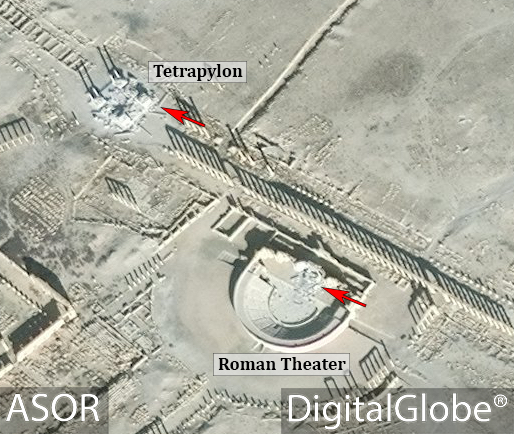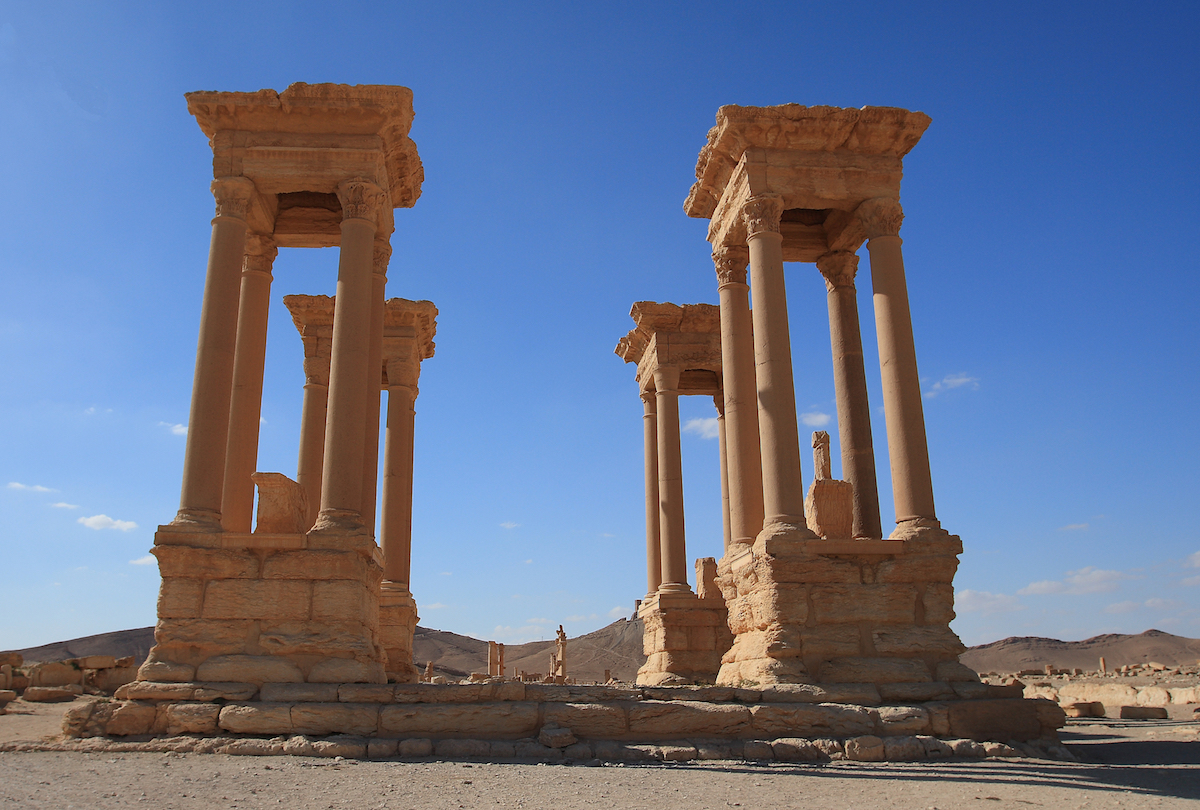ISIS Damages Iconic Monuments in Ancient Syrian City, Reports Say

A month after retaking control of Palmyra, the Islamic State group (also called ISIS or Daesh) has allegedly committed new destruction and executions in the ancient Syrian city.
Two of Palmyra's iconic monuments, the Tetrapylon and the Roman theater, have experienced "significant damage," according to the Cultural Heritage Initiatives (CHI) of the American Schools of Oriental Research (ASOR), which obtained new satellite images of the site from DigitalGlobe.
Meanwhile, the Syrian Observatory for Human Rights alleges that ISIS is again using the archaeological site for mass executions, killing a group of 12 prisoners on Jan. 19. [See Photos of the Destruction to the Tetrapylon and Theater in Palmyra]
"One might interpret these destructions and the recent executions of prisoners, including civilians, at Palmyra as designed by Daesh to develop propaganda," said Michael Danti, a Boston University archaeologist and academic director of ASOR CHI. "We are braced for a possible release of video footage by Daesh."
The new reports are reminiscent of the Islamic State group's previous occupation of the site, from May 2015 to March 2016. During that period, ISIS militants executed prisoners in the Roman theater and hung the body of archaeologist Khaled al-Asaad, Palmyra's longtime head of antiquities, from a column at the site. The group also blew up Palmyra's Arch of Triumph and destroyed several other monuments, statues and funerary towers at the UNESCO World Heritage site.
"This destruction is a new war crime and an immense loss for the Syrian people and for humanity," UNESCO Director General Irina Bokova said in a statement. "This new blow against cultural heritage, just a few hours after UNESCO received reports about mass executions in the theater, shows that cultural cleansing led by violent extremists is seeking to destroy both human lives and historical monuments in order to deprive the Syrian people of its past and its future."

Danti told Live Science that ISIS has not been very active lately in staged or deliberate destructions of heritage sites as they battle to keep control of territory in Syria and Iraq. The group has, however, vandalized cultural sites and infrastructure as they withdraw or retreat from some areas, Danti said.
Sign up for the Live Science daily newsletter now
Get the world’s most fascinating discoveries delivered straight to your inbox.
"For example, as they pulled out of the campus of Mosul University, they burned campus buildings," Danti said. (In 2015, ISIS also released a video showing militants ransacking the Mosul Museum in northern Iraq.)
"It all adds up to a massive cultural heritage and educational crisis for Syria and Iraq that will require large-scale, concerted action from the international community as one part of a massive humanitarian relief program," Danti added.
The latest damage to monuments at Palmyra took place sometime between Dec. 26, 2016, and Jan. 10, 2017, according to ASOR CHI. (The Syrian Directorate General of Antiquities and Museums said that locals had informed them about the destruction at Palmyra at least a week ago.)
The Tetrapylon was built to make Palmyra's main street look more harmonious, as it lies at a point where the route changes direction, according to ASOR CHI. This structure has four large platforms, each supporting four massive columns. The latest satellite images show that now just two columns remain standing, and debris is scattered around the structure. ASOR CHI says this monument seems to have been intentionally destroyed using explosives.
The satellite images also show that the Roman theater, which dates back to the second century A.D., has sustained damage to its stage backdrop and new stone debris appears to be scattered across the center of the stage.
Since war broke out in Syria in 2011, archaeologists have been turning to satellite data to monitor destruction and looting of the region's heritage sites, which include prehistoric mounds, Roman outposts and the ruins of Assyrian, Persian and Akkadian empires.
Original article on Live Science.










